
Introduction
Back in 2017 Nikon launched the D850, their flagship 35mm full-frame digital SLR camera designed for all kinds of professional photographers, including landscape, macro, sports, wildlife, fashion, weddings and portraits.
Fast forward to 2023, and we now have the mirrorless equivalent – the FX-format Nikon Z8, which in almost every way exceeds even what the impressive D850 is capable of.
Sitting just below the 18-month-old Z9 camera in the Nikon pecking order, it quickly becomes very clear that they actually share a lot of similarities when it comes to their core specifications and features
Essentially, the new Nikon Z8 takes almost everything that we loved about the flagship Z9 and squeezes it into a much smaller, lighter and crucially significantly cheaper body.
The Nikon Z8 is priced at £3,999 / $3,999 body only in the UK and USA respectively. It is made in Thailand.
In terms of the Z8’s main rivals, they primarily include the Sony A7R V and the Canon EOS R5, with Nikon’s own Z9, the Sony A1 and the Canon EOS R3 being more action-oriented alternatives.
Read on for our full Nikon Z8 review, complete with full-size sample photos and videos for you to download and evaluate.
Ease of Use
 |
The Nikon Z8 was first announced on May 10th, 2023 as a new professional 35mm full-frame mirrorless camera designed to be the spiritual successor to the popular D850 DSLR.
In a surprising move and despite costing a whopping £1300 / $1500 less than the flagship Z9 model, the two cameras are identical in virtually every way in terms of their specifications, with the chief differences being size, control layout and battery life.
So kudos to Nikon for bravely deciding not to hobble the Z8 in any way in order to encourage you to upgrade to the next model – this really is the baby Z9 that everyone has been waiting for.
The Nikon Z8 has a very clear focus on out-and-out speed, impressively achieving its headline-grabbing 30fps burst shooting speed despite using a very high resolution 45.7 megapixel sensor.
There is one important caveat to bear in mind though – the Z8 can only shoot in JPEG format at 30fps, with only a 20fps rate available when recording Raw files.
On a more positive note, the Z8 can take over 1000 Raw files in a single burst before the camera slows down, equivalent to around 50 seconds of recording time, which is a frankly incredible achievement.
If 20fps for Raw and 30fps for JPEG isn’t fast enough for you, the Z8 has another ace up its sleeve in the form of an impressive 120fps shooting rate when recording 11 megapixel stills.
Perhaps more impressively, all of the Z8’s continuous shooting modes are with full AF/AE tracking, even the 120fps mode!
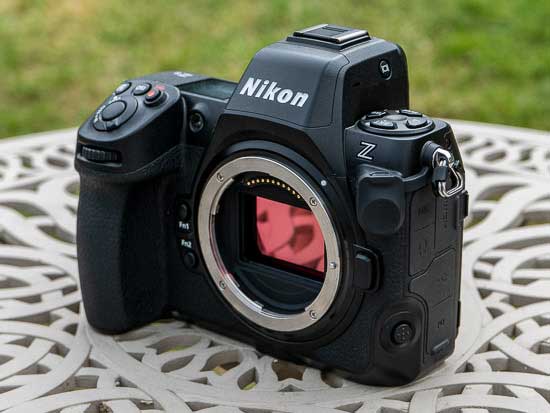 |
The D850 DSLR, meanwhile, can shoot at much slower burst rates of up to 7fps for 51 images with the EN-EL15a battery and up to 9fps for 29 images with the EN-EL18b battery.
So how exactly does the new Z8 mirrorless camera up the speed ante? The Z8 doesn’t have a mechanical shutter inside it, instead relying on using an electronic shutter for all of its capture modes.
It’s one of the very few cameras on the market that entirely forgoes a mechanical shutter – the Sigma fp series is the only other one that we’re aware of, and that has a very clear focus on being a video camera first and foremost.
The Nikon is billed as an all-rounder aimed at both professional stills photographers and videographers, so the complete omission of a mechanical shutter is a very brave decision indeed.
Electronic shutters typically suffer from “rolling shutter” when capturing fast-moving subjects, but Nikon are convinced that they’ve overcome that issue in the Z8 thanks to its combination of a stacked sensor, the very latest Expeed 7 processor which offers processing speeds approximately 12x faster than the Z7 II, and the use of CFexpress Type B memory cards. They’re so convinced that they haven’t even included a mechanical shutter inside the Z8 as a backup.
That decision has a lot of knock-on benefits for Z8 shooters – the camera is essentially silent, so much so that you can choose from a variety of artificial shutter sounds and volumes in order to get some feedback about what it’s actually doing.
With no reliance on a moving mechanical part, there’s less to go wrong, essential for a camera that is undoubtedly going to have a hard life – forget having to worry about maximum shutter cycles with the Z8.
And despite the absence of a mechanical shutter, flash sync up to 1/200 sec. is still supported, which is nearly as fast as the D850’s 1/250 sec. sync speed and indeed as fast as most mechanical shutters, as well as Nikon’s usual array of high speed sync functions.
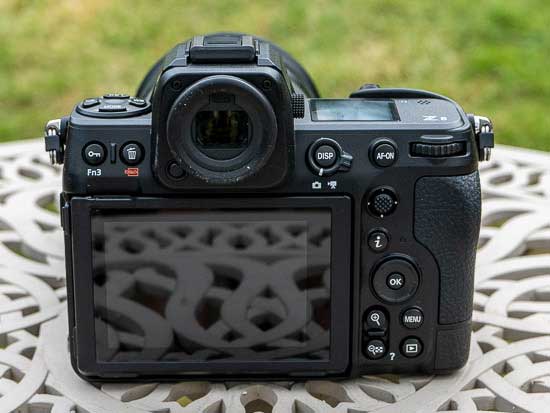 |
At the heart of the Nikon Z8 is the same 45.7 megapixel sensor found in the Z9, with a stacked design that has been developed exclusively by Nikon.
This allows you to use the Z8’s exclusively electronic shutter to freeze fast movement without worrying about rolling shutter distortion whilst enjoying a black-out free, 3690k-dot, 0.8x-magnification OLED electronic viewfinder that refreshes at 120fps, perfect for tracking your subject whilst shooting at up to 30fps.
Sony users have enjoyed the benefits of a stacked design for several years now, since the launch of the original Alpha 9 in 2017, so it’s great to see Nikon competing directly with one of their main rivals.
The Z8’s stacked BSI CMOS sensor provides a native ISO range that runs from 64-25,600, which can be expanded to ISO 32-102,400, and the top shutter speed is 1/32,000 sec. thanks to that electronic shutter.
It’s selected by holding down the ISO button on top of the camera and using the rear command dial, with a familiar LCD window on the top plate detailing the selection made.
It’s also the second Nikon camera ever to offer 8K recording – up to UHD 8K 60p video can be continuously recorded with no crop.
For video specialists the Nikon Z8 boasts up to 8K/60p uncropped 12-bit internal recording to a CFexpress card using ProRes RAW HQ and Nikon’s new N-RAW format, making it one of the very few cameras on the market to offer 8K recording.
If you’re primarily interested in 4K UHD, the Z8 offers that with a variety of frame rates up to 120p slow-motion, again using the entirety of the frame with no crop factor, and 4K UHD video oversampled from 8K is possible when recording in the 30p/25p/24p modes for even greater sharpness and detail.
 |
There’s also uncropped 4K DCI and UHD 10-bit recording at frame rates between 24 and 120fps slow-motion in the MP4 format, and even sharper and more detailed UHD 4K recording is possible at up to 30p by oversampling the sensor’s 8K native output.
The Z8 has a 12-bit N-Log setting as well as a Flat color profile for more latitude when color grading, and HLG (Hybrid Log Gamma) is supported for in-camera HDR-content.
The Z8 features mic and headphone ports and a full-sized HDMI Type-C port for output to an external recorder.
There is one key video difference between the two cameras – the Z9 supports unlimited recording in any mode, whereas the Z8 is limited to recording 8K/30p for 90 minutes and 4K/60p for over 2 hours without overheating.
The Z8’s excellent in-body five-axis image stabilisation system provides up to 6 stops of compensation when paired with certain Z-series lenses that also have their own built-in Vibration Reduction (VR) system.
In-body stabilisation is one of the key benefits of mirrorless versus DSLRs in general and therefore also one of the key reasons to choose the Z8 over the D850.
It has now been designed to work collaboratively with the VR system that’s built into several Z-mount lenses, with the lens and the sensor working together to correct pitch and yaw and the sensor correcting the X-Y and roll movements.
This intelligent Synchro VR mode provides 6-stops of stabilisation with some lenses (the Z MC 105mm F2.8 VR, Z 100-400mm F4.5-5.6 VR S and Z 70-200mm F2.8 VR S), allowing you to hand-hold the camera for up to 2 seconds and still get critically sharp results.
 |
The Nikon Z8 can also stabilise older, non-VR lenses including any F-mount lens that is mounted on it via the Nikon FTZ mount adapter.
The stabilisation system will also work with lenses from other manufacturers – you just need to input the focal length into the camera’s menu system.
In practice, the Nikon Z8 stabilisation system is excellent, making it possible to hand-hold the camera at previously impossibly slow shutter speeds and still maintain critical sharpness.
The Nikon Z8 has a blackout-free 3690k-dot electronic viewfinder with 60fps refresh rate, 100 per cent coverage and 3000-nit brightness, and a four-axis vertically and horizontally tilting 3.2-inch, 2,100K-dot touch-screen LCD screen.
The 493-point phase-detection AF system that’s used when shooting video or in Live View includes 405 auto-area AF points, refreshes at up to 120fps and works down to -9 EV in the special Starlight mode, with 10 different AF-area modes available.
Nikon have added another welcome feature to the Z8 in the form of 3D tracking, something that has long been a mainstay on the company’s DSLRs.
Thankfully, it works just as well and in the same way, drawing a grey square box around the subject and tenaciously tracking it when you’re using the C-AF mode.
In fact, it’s even better than on, say, the D6 or D850 as it now works across the entire frame rather than just in the centre, and it’s even more reliable when used in conjunction with the subject recognition settings.
 |
Thanks to its Expeed 7 processor, the Nikon Z8 offers a range of deep-learning artificial intelligence based AF tracking modes.
The Z8 can recognise ten different subject types including people, animals, birds and vehicles, whilst the company’s most advanced 3D-tracking system makes its debut in a Nikon mirrorless camera.
The Z8 can recognise and track eyes that are much smaller in the frame than previous models, and it works even if the person is wearing a mask, helmet or sunglasses. Subject tracking works for humans and also dogs, cats and birds, the latter even in flight.
The Nikon Z8 also has the ability to track vehicles, including planes, trains, bicycles and motorbikes. What’s more, if the driver is wearing a helmet, the AF system will lock on to that, ensuring that the most important subject is in focus.
The new Z8 rather surprisingly additionally recognises aircraft as a subject – either the whole body, front or the cockpit.
We expect this feature to make it onto the Z9 at some point in the future via a firmware upgrade, but for now the Z8 is the only Nikon camera to offer it.
A major difference between the Nikon Z8 and other similar systems from Canon, Olympus and Sony is that the Z8 additionally offers an ‘Auto’ subject mode that can reliably recognise the correct subject, so that you don’t have to manually switch between them. You can still do that if you want to make sure that the camera only detects a certain subject, but for most occasions the Auto mode does a fine job.
The Nikon Z8 has one UHS-II SD card slot and one ultra-high speed CFexpress Type B slot, so it doesn’t follow the lead of the Z9 which has two CFexpress slots.
 |
The memory card format is an important part of using the Z8, supporting the 8K video recording, burst shooting and speedy performance, so you ideally need to use a CFexpress card that supports in excess of 1500Mbps write speeds to get the best out of the camera.
There’s also built-in Wi-Fi and Bluetooth, and integrated USB 3.2 Type-C, full-size Type A HDMI, headphone, microphone, 10-pin remote/accessories, and 1000BASE-T Ethernet ports.
Note that unlike the Z9, the new Z8 doesn’t not offer built-in GPS tracking – instead you’ll have to connect to your smartphone via Bluetooth and use the SnapBridge app.
The Nikon Z8’s magnesium alloy and carbon body is both dust- and weather-resistant, just like the D850, with both cameras offering the same level of weather-proofing as each other.
The Nikon Z8 takes a markedly different approach to the much larger and heavier Z9 by not featuring an integrated grip with duplicated vertical controls
The Z8 is therefore significantly smaller and lighter than the Z9 which sits above it in the range, as the new model does not have a dual-grip design.
Officially according to Nikon’s figures, it’s a massive 30% smaller and 430g lighter than the Z9.
Compared to the D850 DSLR, which Nikon are also directly comparing the Z8 to, the new camera is 15% smaller and 105g lighter.
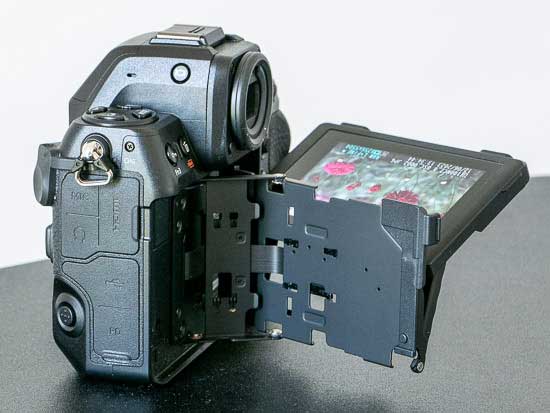 |
The Nikon Z8 can be used with an optional battery grip (the MB-N12), instead of having one integrated into the body, if you’d prefer to have a larger body with portrait controls and extended battery life.
As a direct consequence of the single grip design, the Z8 naturally offers a smaller number of programmable buttons than the Z9.
It also omits a drive mode shooting dial on the top-left of the camera body, replaced instead by using a combination of using the drive mode button which is located in the same space along with the rear command dial. This is joined by buttons for Bracketing, While Balance and Shooting Mode.
Despite the drastic size reduction, the Z8 still benefits from having a very deep handgrip that comfortably accommodates four fingers, something that can’t be said of some of its main rivals.
The Nikon Z8 also offers something that even the range-topping Z9 doesn’t feature, though, namely not one but two USB terminals.
There’s the usual USB-C charging terminal plus a new super-speed USB communication terminal which makes the Z8 the first Nikon camera to feature USB-C to ethernet connectivity via an adapter (not supplied).
Battery life is one of the few key differences between the Z8 and Z9 cameras, other than their size.
The Z9 uses a EN-EL18d battery, with a CIPA-rated 700 shots maximum achievable from a full charge.
 |
The new Z8 uses the much smaller capacity EN-EL15C battery that’s also used by the Z7 II, Z6 II and Z5 cameras, providing a CIPA-rated 300 shots maximum achievable from a full charge.
In practice, even if you shoot mainly in the Nikon Z8’s 30fps burst mode, it will still take some time to rattle through its battery life, as the quoted CIPA figures are very conservative. Plus you can always pack a spare battery or three if heading out for the day or as back-up when covering a major event.
File format wise, the Nikon Z8 supports both RAW and JPEGs, and also the ‘next generation’ HEIF (High Efficiency Image File) file format, which allows images with 10-bits of data to be saved in a file the equivalent size of a JPEG while suffering less compression.
Of course, Raw files can be shot in tandem with JPEGs as per usual – here with Nikon’s own .NEF file extension, which requires the likes of Photoshop or Lightroom to access and open.
Nikon have introduced the brand new High Efficiency RAW file format on the Z8, which retains the same level of detail as an uncompressed RAW but crucially at either half or one-third of the standard RAW file size.
This allows for both faster reading/writing to the memory card and less storage space being required, crucial requirements given the large 45 megapixel files that the camera generates.
The Z8 is the latest Nikon camera to have built-in IEEE 802.11b/g/n/a/ac Wi-Fi (5 GHz and 2.4 GHz) and Bluetooth 5.0.
Investigating the front of the camera, the Nikon Z8 appears almost identical to the Z9, with a familiar pentaprism SLR shape and very solid construction.
 |
It features a large and stiff lens release button nestled on the right. Just below this is an AF mode button that lets you choose both the AF mode and AF area mode during viewfinder shooting, using the front and rear command dials to toggle between the various options.
Over on the other side of the lens mount is a row of two function buttons, one less than on the Z9, the positioning of which means that they fall beneath the fingers of the right hand when gripping the camera – though these may benefit those with larger hands as we found them a bit of an uncomfortable stretch to reach.
There are, however, a veritable plethora of customisable buttons on this camera, so you can pretty much configure it to have your favoured settings literally at your fingertips if you put the time in to set it up to suit you particular way of working.
You might completely miss it because it’s turned off by default, but the Z8 has a built-in sensor shield that protects the camera’s sensor when it is turned off, ideal for protecting it from fingerprints or when you’re changing lenses in dusty or dirty environments.
On the top-left of the camera is where you can change the shooting mode (P, A, S, M – unsurprisingly there’s no auto on offer here), drive mode, bracketing mode, and release mode.
What we personally and also immediately missed here, compared to most pro and semi pro cameras, was a large, chunky tactile shooting mode wheel or dial to the left or right of the viewfinder.
Even if the shooting mode can be rapidly – and as it turns out, fairly conveniently – accessed via a press of the Mode button on top of the camera, we’d still prefer a more traditional dial.
To the right of the viewfinder we have the top-plate LCD. This is extremely handy for showing you all of the key settings at a glance, such as aperture, shutter speed, drive mode, ISO, remaining shot count and battery life.
 |
At the top of the front grip you’ll find the camera’s on/off switch, which surrounds the shutter release, along with a third option for illuminating the buttons. Just behind here there are three dedicated buttons, one for video recording, one for ISO and one for exposure compensation.
Finally, just above the rear thumb rest, you’ll find a familiar rear command dial, which can be used in conjunction with the dial on the front grip to control the camera’s key settings – depending on which shooting mode you’re in. In manual mode, the default set up is for the front dial to control aperture, while the rear dial is used to adjust shutter speed.
On the rear of the Z8, to the left of the viewfinder are the shared Lock/Fn3 button and the delete button. By default the Fn3 button allows you to set the Picture Control, but it can also be reconfigured to Playback if you’d prefer to exactly mirror the layout of the D850.
On the viewfinder itself, there is another button for adjusting how the viewfinder works – whether you want it to automatically activate, switch off the screen, or not have the viewfinder on at all.
On the opposite side of the viewfinder you’ve got the diopter adjustment dial which you can use to align the viewfinder with your own vision.
The rest of the camera’s buttons are all grouped together on the right of the viewfinder / screen setup. It starts with a display button which, unsurprisingly, you can use to adjust how the rear screen display looks – including switching on/off shooting information, a histogram and a level.
You can also adjust the viewfinder display by pressing the same button while your eye is held up to the viewfinder. That means that you can have different display options depending on whether you’re using the screen or the viewfinder, if you like.
The Nikon Z8 departs from the blueprint of its DSLR-equivalent by offering a four-axis tilting monitor, whereas the LCD screen on the D850 only tilts up and down.
 |
Whilst not quite as versatile as a fully articulating, vari-angle LCD screen, the Z8’s screen works very well for both portrait or landscape-orientation shooting.
You can tilt it upwards to face you in either mode, whilst still being centrally located which make it easier to compose with than a screen that flips out to the side.
An angle adjustable LCD is also useful if you’re going to be shooting video in the main, as it’s tricky to be 100% certain you’ve got focus spot on when using a fixed screen outdoors; inevitably glare and natural reflections sometimes get in the way.
On the flip side, with two hinges involved it is quite a complex bit of engineering that may in the long-term suffer from heavy use.
Note that the Z8’s screen cannot be usefully folded flat against the back of the camera to protect it when in transit in a camera bag.
As mentioned above, the LCD screen is touch-sensitive, allowing you to control everything from setting the AF point and firing the shutter, navigating the menu systems and browsing your images during playback. It’s a very precise, responsive system that’s a veritable joy to use.
A proximity sensor is located directly above the viewfinder, which automatically switches between the EVF and LCD screen. When the LCD screen is swung outwards, the EVF is cleverly turned off automatically.
Around the Display button is a switch which you can use to move between video mode and stills mode. This switch is fairly stiff, so it seems reasonably unlikely you’d do this by accident – but if you do, it should be fairly obvious that you’re in the wrong mode.
 |
To the right of the Display button is the AF-On button. You can set this up for back-button focusing if you prefer to work in that way, which will mean that if you press the shutter release, it won’t attempt to refocus again – useful for focusing and recomposing.
Just underneath the AF-On button is a joystick. You can use this to move the AF point around the frame, if you don’t want to use the touchscreen.
Unlike some other models on the market, you can’t use the viewfinder and touchscreen at the same time – so it’s very likely you’ll be using the joystick to make quick AF point changes.
The joystick can also be used to move around either the main menu or the quick menu, but you will first need to enable this option in the custom control settings section of the menu.
The quick menu itself can be accessed by pressing the “I” button just underneath the joystick. By doing so, you’ll presented with a group of commonly used settings, such as Picture Control, Quality, Drive Mode, AF-Area Mode, White Balance and more. You can navigate around the menu using either the joystick (if set up) or via the navigational pad just underneath the stick.
Once on the correct setting, press OK and then you can use the scrolling dials to choose between the various options. If there are any settings in this quick menu you find you don’t use very often, you can take them out and replace them with other settings which perhaps you use more frequently.
The four way navigational pad, with an OK button in the middle, can be used to move the AF point around the screen (if you don’t want to use the joystick/touchscreen), navigate the menus, to toggle the information display on images in playback, and to browse through said images.
The OK button can be used for menu selection, but in shooting mode, you can also use it to reset the AF point to the centre of the screen.
 |
Just underneath the navipad is a duo of buttons which can be used to zoom in and out of the scene you’re photographing – particularly useful for checking critical focus, especially if you’re using manual focus. You can also use the buttons when viewing images in playback to zoom in and out, as an alternative to using the touchscreen to pinch in and out of the frame.
To the right of the zoom out button, there’s the Playback button. The Menu button is found above that, and it will take you into the camera’s main menu.
This is where you should head when you need to make more complex settings than the quick menu will prove you with. The menu itself is divided into a number of categories, which are fairly self-explanatory and easy to navigate around.
Most of the buttons on the Nikon Z9 could be illuminated if its display light button was pressed, allowing for users to better identify functions if working in near dark conditions, and it’s great to see that the new Nikon Z8 also inherits this very useful feature.
There are Photo Shooting, Video Recording, Custom Settings, Playback, Setup and Network menus. Handily, there’s also a “My Menu” tab which is where you can save any settings which you are frequently using so you can quickly get to them whenever you need them, rather than scrolling through the various pages of the menu.
You’ll find most of the camera’s ports on the left hand side of the camera, which includes a headphone and microphone jack, a full-size HDMI port, a flash sync port, a remote control port and the aforementioned dual USB-C ports.
On the opposite side of the camera is where you’ll find the dual CFexpress and SD UHS-II memory card slots housed under a lockable cover.
You can set up the card slots to work in whichever way you feel is best – whether that’s a straightforward backup/copy of the first card slot, an overflow to give you more space, or to have one card record one type of media (such as raw files) and the other to record another (such as still files or video).
So now that we’ve taken an in-depth look at the features and handling, what about image quality? Do the pictures live up to what we’d hope for and indeed expect from a £$4K+ camera body? Carry on reading our Image Quality section to find out.
Image Quality
All of the sample images in this review were taken using the 45.7 megapixel Fine* JPEG setting, which produces an average image size of around 12Mb.
The Z8’s 45.7 megapixel sensor, as we’d expect, is capable of resolving extremely fine detail which looks stunning on screen, even when zooming in at 100%. Having such a high resolution to play with also means you can crop into the scene after the fact and still keep a high resolution file.
Colours directly from the camera are very good, being realistic while also containing a good degree of vibrancy. If you shoot in raw format, you’ll find that the files are very malleable, allowing you to extract lots of detail and make changes as you wish, with the High Efficiency Raw format keeping file sizes under control without a noticeable drop in quality.
Using the all-purpose metering mode generally results in well-balanced exposures without the need to switch to spot-metering for most subjects. Similarly, the automatic white balance settings do a good job of keeping colours looking realistic.
With such a high resolution sensor, the Nikon Z8 has the potential to suffer in low light, however it still produces very usable images at high ISOs. For sharing at small(ish) sizes, the highest we’d probably recommend is ISO 25600, with ISO 51200 being just that bit too smudgy to recommend unless desperate.
Noise
The base sensitivity of the Nikon Z8 is ISO 64 but you can go down to ISO 32 (L1.0) if you wish. At the other end of the scale, the highest native sensitivity of the Z8 is ISO 25600, but two boosted settings, ISO 51200 and ISO 102400, are also available. Here are some 100% crops which show the noise levels for each ISO setting, with JPEG on the left and RAW on the right.
| JPEG | RAW |
|
ISO 32 (100% Crop) |
ISO 32 (100% Crop) |
 |
 |
|
ISO 64 (100% Crop) |
ISO 64 (100% Crop) |
 |
 |
|
ISO 100 (100% Crop) |
ISO 100 (100% Crop) |
 |
 |
|
ISO 200 (100% Crop) |
ISO 200 (100% Crop) |
 |
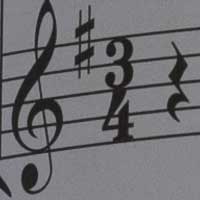 |
|
ISO 400 (100% Crop) |
ISO 400 (100% Crop) |
 |
 |
|
ISO 800 (100% Crop) |
ISO 800 (100% Crop) |
 |
 |
|
ISO 1600 (100% Crop) |
ISO 1600 (100% Crop) |
 |
 |
|
ISO 3200 (100% Crop) |
ISO 3200 (100% Crop) |
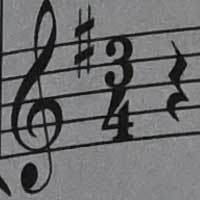 |
 |
|
ISO 6400 (100% Crop) |
ISO 6400 (100% Crop) |
 |
 |
|
ISO 12800 (100% Crop) |
ISO 12800 (100% Crop) |
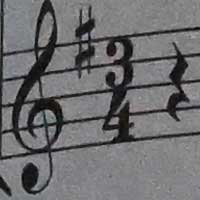 |
 |
|
ISO 25600 (100% Crop) |
ISO 25600 (100% Crop) |
 |
 |
|
ISO 51200 (100% Crop) |
ISO 51200 (100% Crop) |
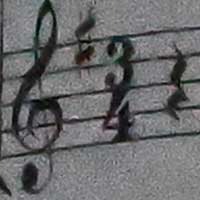 |
 |
|
ISO 102400 (100% Crop) |
ISO 102400 (100% Crop) |
 |
 |
File Quality
The Nikon Z8 has two different file options – Raw and JPEG – with three compression options available for Raw and 6 for JPEG. Here are some 100% crops which show the differences between them all, with the full image size shown in brackets.
Night
The Nikon Z8’s maximum shutter speed is 900 seconds in the Manual shooting mode and there’s a Bulb mode for even longer exposures, which is excellent news if you’re seriously interested in low light photography.

Active D-lighting (ADL)
D-lighting is Nikon’s dynamic range optimisation tool that attempts to squeeze the full dynamic range of the sensor into JPEGs. Active D-lighting works “on the fly”, before the in-camera processing engine converts the raw image data into JPEGs. The available settings are Off, Low, Normal, High, Extra High 1 and Extra High 2, plus an Auto mode.

Off
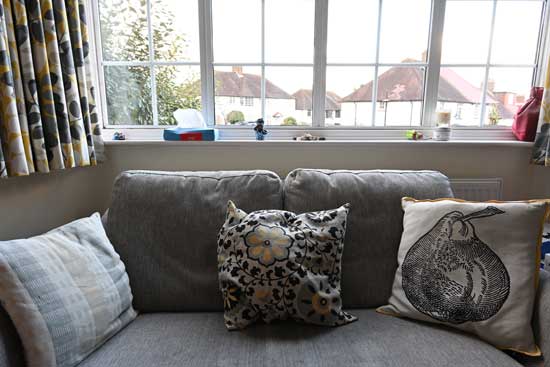
Low

Normal

High

Extra High 1

Extra High 2
HDR
The Nikon Z8’s HDR Mode captures three different exposures and combines them into one, retaining more shadow and highlight detail, with an Auto mode, and four different strengths.
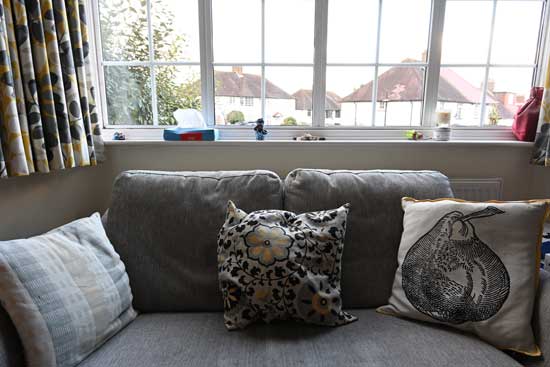
Off
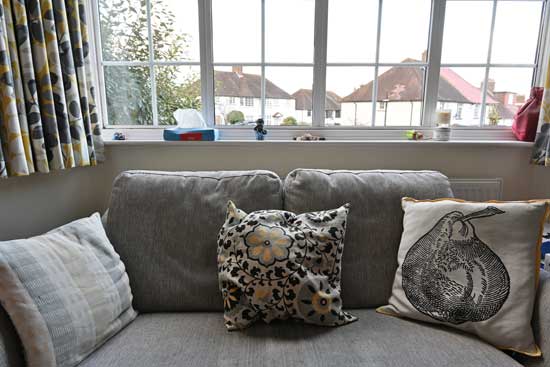
Low

Normal

High

Extra High
Picture Controls
Nikon’s Picture Controls are preset combinations of sharpening, contrast, brightness, saturation and hue. All 28 different Picture Controls can be tweaked to your liking, then saved and transferred to other cameras.

Auto

Standard

Neutral
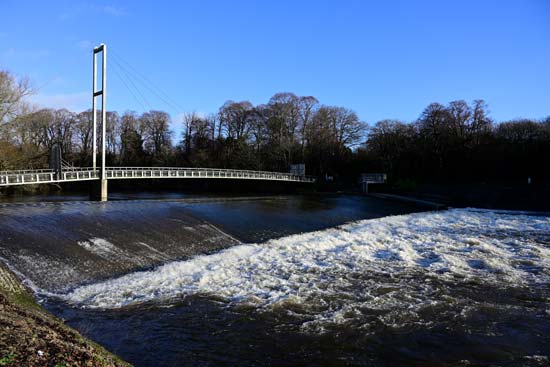
Vivid
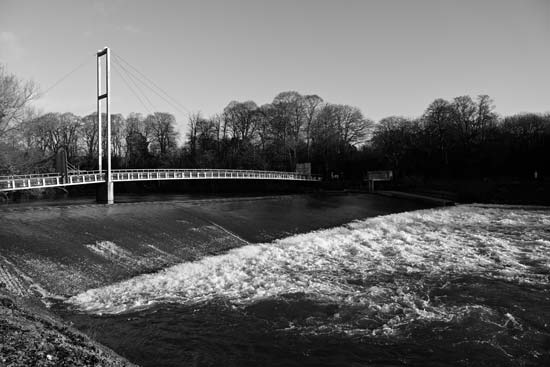
Monochrome

Portrait

Landscape

Flat

Dream
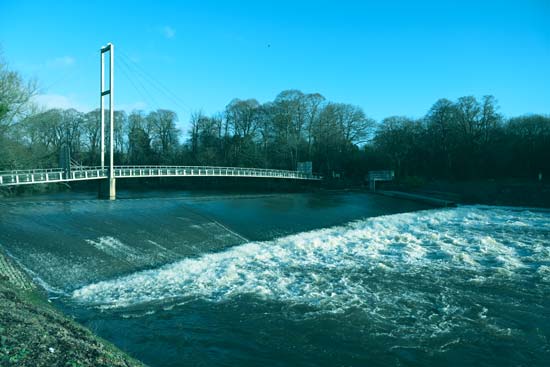
Morning

Pop

Sunday
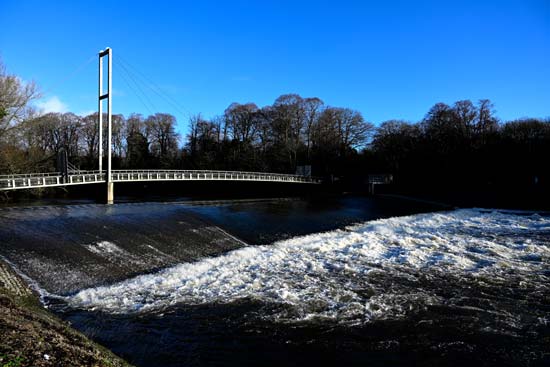
Somber

Dramatic

Silence

Bleached

Melancholic
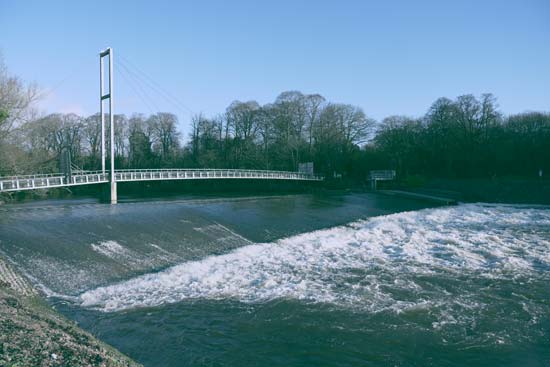
Pure
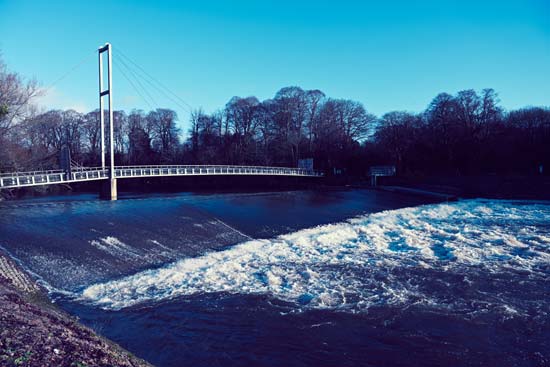
Denim

Toy

Sepia
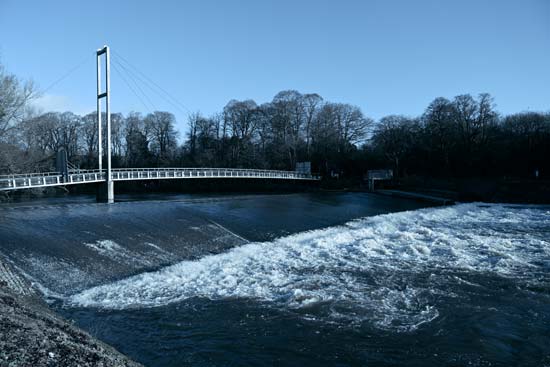
Blue

Red

Pink

Charcoal

Graphite

Binary

Carbon
Crop Modes
The Nikon Z7 II is an FX camera but it can also shoot in one of three crop modes, including a 19.4-megapixel DX crop mode, a 38.3 megapixel 16:9 mode, and a 30.3-megapixel 1:1 square mode.
The boundaries of the cropped areas are denoted with thin black lines in the viewfinder, which otherwise continues to show the full FX view, allowing you to see what’s happening outside the cropped frame – perfect for sports and action shooting.

FX

DX

16×9

1×1
Multiple Exposure
The Nikon Z8’s multiple exposure mode allows you to take between two and ten images and merge them into a single photo in-camera.
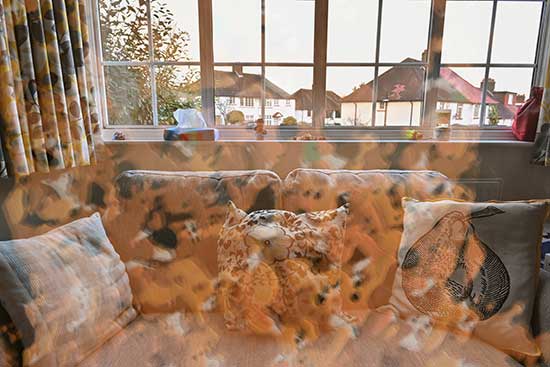
Sample Images
This is a selection of sample images from the Nikon Z8 camera, which were all taken using the 45.7 megapixel Fine* JPEG setting. The thumbnails below link to the full-sized versions, which have not been altered in any way.
Sample RAW Images
The Nikon Z8 enables users to capture RAW and JPEG format files. We’ve provided some Nikon RAW (NEF) samples for you to download (thumbnail images shown below are not 100% representative).
Sample Movies & Video
This is a sample 8K/30p movie at the quality setting of 7680 × 4320 pixels at 30 frames per second.
This is a sample 4K/120p movie at the quality setting of 3840 × 2160 pixels at 120 frames per second.
This is a sample 4K/60p movie at the quality setting of 3840 × 2160 pixels at 60 frames per second.
This is a sample 4K/60p movie at the quality setting of 3840 × 2160 pixels at 30 frames per second.
This is a sample 1080/120p movie at the quality setting of 1920 × 1080 pixels at 120 frames per second.
Product Images











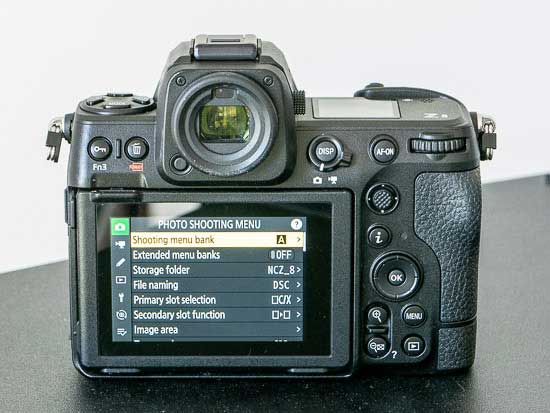












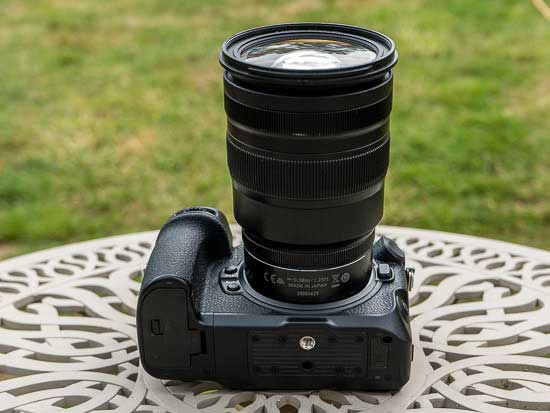
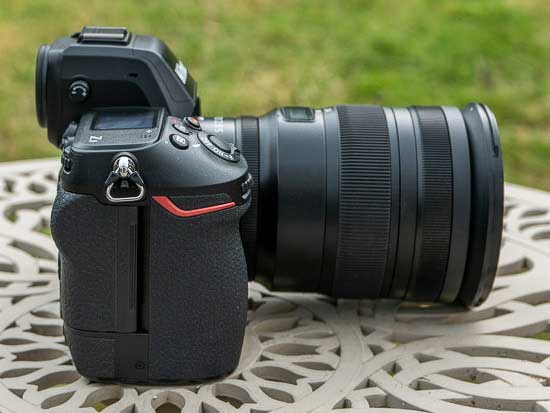



Conclusion
Commendably offering virtually all of the same features and performance as the flagship Z9, the new Nikon Z8 is a much smaller, lighter and crucially cheaper all-rounder that, simply put, is one of the best cameras that we’ve ever reviewed.
If you’re looking for one professional-level camera that really can do it all for both stills and video and you can afford the still not inconsiderable £3,999 / $3,999 body only asking price, the new Nikon Z8 should be right at the top of your shopping list.
There are a few key ways in which the Z8 is inferior to the Z9, most notably the shorter battery life and video recording time, but it also offers several advantages over the Z9, including greater portability, more versatile memory card formats, dual USB-C ports, and the distinct Aircraft subject-detection mode.
Indeed, after using the Z8 for a while, we greatly prefer the versatility that the smaller body offers compared to the dual-grip design Z9. It’s much more discrete and you can always fit the optional battery grip to further improve the handling for use with longer lenses.
Nikon have once again surprised many, including us, by not only releasing such a capable camera, but giving it a price-tag that’s on a par with its main rivals.
The Sony A7R V is less of an all-round hybrid camera than the Z8, perhaps better suited to stills photography with its amazing viewfinder, mechanical shutter and higher megapixel count.
Despite being 3 years older, the Canon EOS R5 is still a competitive product that is still well worth considering, but it can’t quite match the new Z8.
Cameras like the Sony A1, Canon EOS R3 and Nikon’s own Z9 are both more action-oriented and more expensive, leaving the new Z8 somewhat in a league of its own.
Simply put, the new Z8 more than hits the mark as both the spiritual successor to the incredibly popular D850 DSLR and being the baby Z9 that everyone was hoping for- it’s the best ever all-round full-frame mirrorless camera.
| Ratings (out of 5) | |
|---|---|
| Design | 5 |
| Features | 4.5 |
| Ease-of-use | 5 |
| Image quality | 5 |
| Value for money | 5 |
Main Rivals
Listed below are some of the rivals of the Nikon Z8.
The Canon EOS R3 is a professional full-frame mirrorless camera for sports and action photographers that features a 24 megapixel stacked BSI sensor, 6K/60p Raw and 4K/120p video recording, 30fps burst shooting, eye-control autofocusing and a dual-grip design. Read our in-depth Canon R3 review complete with full-size sample photos and videos to find out just what the all-action R3 is capable of…

The EOS R5 has been the hottest full-frame camera on the block ever since Canon pre-announced it back at the start of 2020, thanks to its headline grabbing twin features of a 45 megapixel sensor and 8K video recording. We’ve seen it a few times since then, but now we can finally bring you our final Canon R5 review, complete with full-size sample photos and videos!

The Nikon D850 is a brand new 45.7 megapixel full-frame BSI sensor DSLR camera with no optical low pass filter. The D850 also offers 4K video recording, a 3.2-inch tilting LCD touchscreen, 153-point AF system, an optical viewfinder with 0.75x magnification, 7fps burst shooting and 1,840 shot battery life. Read our in-depth Nikon D850 review to find out if this is the best all-round DSLR camera on the market…

The Nikon Z7 II full-frame mirrorless camera is the 2020 update of the original Z7 model, principally improving the autofocusing, buffer and video and adding a second memory card slot. Are these changes enough for it to compete with its main rivals like the Sony A7R IV and the Canon EOS R5? Find out now by reading our in-depth Nikon Z7 II review, complete with full size sample photos and videos…

The Nikon Z9 is a professional level, full-frame mirrorless camera for photographers and videographers that features a 45 megapixel stacked BSI sensor, 8K/30p and 4K/120p video recording, 30fps burst shooting and a dual-grip design. Read our in-depth Nikon Z9 review complete with full-size sample photos and videos to find out just what this flagship camera is capable of…

The Sony Alpha 1 camera, or Sony A1 for short, is the best camera that Sony have ever released, and currently the best all-round camera on the market. It’s also one of the most expensive, so read our in-depth Sony A1 review complete with full-size sample JPEG and Raw photos and movies to find out if it’s truly the One for you…
Review Roundup
Reviews of the Nikon Z8 from around the web.
Nikon’s latest high-end full-frame mirrorless camera, the Nikon Z8, offers essentially the same specifications as the flagship Nikon Z9, but in a significantly smaller and less expensive body. With an impressive combination of high resolution, high speed, and cutting-edge autofocus, all wrapped up in a rugged pro-spec body, it’s a camera that should be able to take on any conceivable task. Without doubt it’s one of the best Nikon mirrorless cameras to date.
Read the full review »
The $4,000 Nikon Z8 is going to be the way to go for the vast majority of photographers. Even ones doing serious professional work should consider how much power the Z8 gives at a more reasonable price. However, the Z9 still has some powerful advantages, and how important they are is going to be very case specific.
Read the full review »
The Nikon Z8 is, for all intents and purposes, a Z9 crammed into a smaller body, using the same stacked CMOS sensor with a blisteringly fast readout that makes a mechanical shutter completely redundant. A little chunkier than the Z6/7 line, it has more direct-access buttons than these cameras, which make it a genuine pleasure to use.
Read the full review »
Specifications
Type
Digital camera with support for interchangeable lenses
Lens Mount
Nikon Z mount
Image Sensor
FX, CMOS, 35.9 mm x 23.9 mm
Total pixels
52.37 million
Dust-reduction System
Image sensor cleaning, Image Dust Off reference data (requires NX Studio)
Effective pixels
45.7 million
Image size (pixels)
[FX (36 x 24)] selected for image area:
(L) 8256 x 5504 ( 45.4 million)
(M) 6192 x 4128 ( 25.6 million)
(S) 4128 x 2752 ( 11.4 million)
[DX (24 x 16)] selected for image area:
(L) 5392 x 3592 ( 19.4 million)
(M) 4032 x 2688 ( 10.8 million)
(S) 2688 x 1792 ( 4.8 million)
[1:1 (24 x 24)] selected for image area:
(L) 5504 x 5504 ( 30.3 million)
(M) 4128 x 4128 ( 17.0 million)
(S) 2752 x 2752 ( 7.6 million)
[16:9 (36 x 20)] selected for image area:
(L) 8256 x 4640 ( 38.3 million)
(M) 6192 x 3480 ( 21.5 million)
(S) 4128 x 2320 ( 9.6 million)
File formats
NEF (RAW): 14 bit; choose from lossless compression, high efficiency (high), and high efficiency options
JPEG: JPEG-Baseline compliant with fine (approx. 1 : 4), normal (approx. 1 : 8), or basic (approx. 1 : 16) compression; size-priority and optimal-quality compression available
HEIF: Supports fine (approx. 1 : 4), normal (approx. 1 : 8), or basic (approx. 1 : 16) compression; size-priority and optimal-quality compression available
NEF (RAW)+JPEG: Single photograph recorded in both NEF (RAW) and JPEG formats
NEF (RAW)+HEIF: Single photograph recorded in both NEF (RAW) and HEIF formats
Picture Control System
Auto , Standard , Neutral , Vivid , Monochrome , Portrait , Landscape , Flat
Creative Picture Controls (Dream, Morning, Pop, Sunday, Somber, Dramatic, Silence, Bleached, Melancholic, Pure, Denim, Toy, Sepia, Blue, Red, Pink, Charcoal, Graphite, Binary, Carbon); selected Picture Control can be modified; storage for custom Picture Controls
Note: Choice of Picture Controls is restricted to Standard, Monochrome, and Flat when HLG is selected for tone mode during still photography.
Media
CFexpress (Type B) , XQD , SD , SDHC (UHS-II compliant) , SDXC (UHS-II compliant)
Dual card slot
1 CFexpress card or XQD card and 1 Secure Digital (SD) card
Either card can be used for overflow or backup storage, for separate storage of NEF (RAW) and JPEG or HEIF pictures, or for storage of duplicate JPEG or HEIF pictures at different sizes and image qualities; pictures can be copied between cards.
File System
DCF 2.0, Exif 2.32, MPEG‑A MIAF
Viewfinder
1.27-cm/0.5-in. approx. 3690k-dot (Quad VGA) OLED electronic viewfinder with color balance, auto and 18-level manual brightness controls, and support for high frame rates
Viewfinder Frame Coverage
Approx. 100% horizontal and 100% vertical
Viewfinder Magnification
Approx. 0.8x (50 mm lens at infinity, -1.0 m-1)
Eyepoint
23 mm (-1.0 m-1; from rearmost surface of viewfinder eyepiece lens)
Diopter Adjustment
-4 – +3 m-1
Eye sensor
Automatically switches between monitor and viewfinder displays
Compatible Lenses
Z mount NIKKOR lenses
F mount NIKKOR lenses (mount adapter required; restrictions may apply)
Shutter
Electronic shutter with shutter sound and sensor shield
Shutter speed
1/32000 to 30 s (choose from step sizes of 1/3, 1/2, and 1 EV, extendable to 900 s in mode M), bulb, time
Flash Sync Speed
Flash synchronizes with shutter at speeds of 1/250 or 1/200 s; or slower (but note that the guide number drops at speeds of 1/200 to 1/250 s); sync speeds as fast as 1/8000 s are supported with auto FP high-speed sync
Release mode
Single frame , continuous low-speed , continuous high-speed , high-speed frame capture (with Pre-Release Capture) , Self-timer
Approximate frame advance rate
Up to 120 fps
Continuous low-speed: Approx. 1 to 10 fps
Continuous high-speed: Approx. 10 to 20 fps
High-speed frame capture (C30): Approx. 30 fps
High-speed frame capture (C60): Approx. 60 fps
High-speed frame capture (C120): Approx. 120 fps
Maximum frame advance rate as measured by in-house tests.
Self-timer
2 s, 5 s, 10 s, 20 s; 1 to 9 exposures at intervals of 0.5, 1, 2, or 3 s
Exposure Metering System
TTL metering using camera image sensor
Exposure Metering mode
Matrix metering
Center-weighted metering: Weight of 75% given to 12 or 8 mm circle in center of frame or weighting can be based on average of entire frame
Spot metering: Meters circle with a diameter of approximately 4 mm centered on selected focus point
Highlight-weighted metering
Exposure Metering Range
-3 to +17 EV
Figures are for ISO 100 and f/2.0 lens at 20 °C/68 °F
Exposure Modes
P: programmed auto with flexible program, S: shutter-priority auto, A: aperture-priority auto, M: manual
Exposure Compensation
-5 to +5 EV (choose from step sizes of 1/3 and 1/2 EV)
Exposure Lock
Luminosity locked at detected value
ISO sensitivity (Recommended Exposure Index)
ISO 64 to 25600 (choose from step sizes of 1/3 and 1 EV); can also be set to approx. 0.3, 0.7, or 1 EV (ISO 32 equivalent) below ISO 64 or to approx. 0.3, 0.7, 1, or 2 EV (ISO 102400 equivalent) above ISO 25600; auto ISO sensitivity control available
Note: ISO sensitivity is limited to 400 to 25600 when HLG is selected for tone mode.
Active D-Lighting
Auto, Extra high 2, Extra high 1, High, Normal, Low, and Off
Multiple exposure
Add, average, lighten, darken
Other options
HDR overlay, photo mode flicker reduction, high-frequency flicker reduction
Autofocus system
Detection range
-7 to +19 EV (-9 to +19 EV with starlight view)
Measured in photo mode at ISO 100 and a temperature of 20 °C/68 °F using single-servo AF (AF‑S) and a lens with a maximum aperture of f/1.2
Lens servo
Autofocus (AF):
Single-servo AF (AF-S) , Continuous-servo AF (AF-C) , full-time AF (AF-F; available only in video mode)
; predictive focus tracking
Manual focus (M):
Electronic rangefinder can be used
Focus point
493
Number of focus points available in photo mode with single-point AF selected for AF-area mode and FX selected for image area
AF-area mode
Pinpoint (available in photo mode only), single-point, dynamic-area (S, M, and L; available in photo mode only), wide-area (S, L, C1, and C2), and auto-area AF; 3D-tracking (available in photo mode only); subject-tracking AF (available in video mode only)
Focus lock
Focus can be locked by pressing shutter-release button halfway (single-servo AF/AF‑S) or by pressing the center of the sub-selector
Camera on-board VR
5-axis image sensor shift
Lens on-board VR
Lens shift (available with VR lenses)
Flash control
TTL: i‑TTL flash control; i‑TTL balanced fill-flash is used with matrix, center-weighted, and highlight-weighted metering, standard i‑TTL fill-flash with spot metering
Flash modes
Front-curtain sync, slow sync, rear-curtain sync, red-eye reduction, red-eye reduction with slow sync, off
Flash compensation
-3 to +1 EV (choose from step sizes of 1/3 and 1/2 EV)
Flash-ready indicator
Lights when optional flash unit is fully charged; flashes as underexposure warning after flash is fired at full output
Accessory shoe
ISO 518 hot-shoe with sync and data contacts and safety lock
Nikon Creative Lighting System (CLS)
i-TTL flash control, radio-controlled Advanced Wireless Lighting, optical Advanced Wireless Lighting, modeling illumination, FV lock, Color Information Communication, auto FP high-speed sync, unified flash control
White balance
Auto (3 types), natural light auto, direct sunlight, cloudy, shade, incandescent, fluorescent (3 types), flash, choose color temperature (2500 to 10,000 K), preset manual (up to 6 values can be stored), all with fine-tuning
Bracketing types
Exposure and/or flash , white balance , ADL
Video Metering system
TTL metering using camera image sensor
Metering mode
Matrix, center-weighted, or highlight-weighted
Frame size (pixels) and frame rate
7680 x 4320 (8K UHD): 30p (progressive)/25p/24p
3840 x 2160 (4K UHD): 120p/100p/60p/50p/30p/25p/24p
1920 x 1080: 120p/100p/60p/50p/30p/25p/24p
Note: Actual frame rates for 120p, 100p, 60p, 50p, 30p, 25p, and 24p are 119.88, 100, 59.94, 50, 29.97, 25, and 23.976 fps respectively.
Video Frame size (pixels) and frame rate (RAW video)
8256 x 4644: 60p/50p/30p/25p/24p
5392 x 3032: 60p/50p/30p/25p/24p
4128 x 2322: 120p/100p/60p/50p/30p/25p/24p
3840 x 2160: 120p/100p/60p/50p
Note: Actual frame rates for 120p, 100p, 60p, 50p, 30p, 25p, and 24p are 119.88, 100, 59.94, 50, 29.97, 25, and 23.976 fps respectively.
Video File format
NEV , MOV , MP4
Video compression
N-RAW (12 bit) , Apple ProRes RAW HQ (12 bit) , Apple ProRes 422 HQ (10 bit) , H.265/HEVC (8 bit/10 bit) , H.264/AVC (8 bit)
Audio recording format
Linear PCM (48 KHz, 24 bit, for videos recorded in NEV or MOV format) , AAC (48 KHz, 16 bit, for videos recorded in MP4 format)
Audio recording device
Built-in stereo or external microphone with attenuator option; sensitivity adjustable
Video Exposure compensation
-3 to +3 EV (choose from step sizes of 1/3 and 1/2 EV)
Video ISO sensitivity (Recommended Exposure Index)
Mode M: Manual selection (ISO 64 to 25600; choose from step sizes of 1/6, 1/3 and 1 EV); with additional options available equivalent to approximately 0.3, 0.7, 1, or 2 EV (ISO 102400 equivalent) above ISO 25600; auto ISO sensitivity control (ISO 64 to Hi 2.0) available with selectable upper limit
Modes P, S, A: Auto ISO sensitivity control (ISO 64 to Hi 2.0) with selectable upper limit
Note: ISO sensitivity is limited to 400 to 25600 when HLG is selected for tone mode.
Video Active D-Lighting
Extra high, High, Normal, Low, and Off
Other options (video)
Time-lapse video recording, electronic vibration reduction, time codes, N-Log and HDR (HLG) video, wave-form display, red REC frame indicator, video recording display zoom (50%, 100%, and 200%), extended shutter speeds (mode M), and dual-format (proxy-video) recording for RAW video; extended oversampling available; option to view video recording info available via i menu; Hi-Res Zoom
Hybrid phase-detection/contrast AF with AF assist
Monitor size
8 -cm ( 3.2 –in.) diagonal
Monitor Type
vertically and horizontally tilting TFT touch-sensitive LCD with 170° viewing angle, approximately 100% frame coverage, and color balance and 15-level manual brightness controls
Monitor resolution
Approx. 2100 k-dot
Playback
Full-frame and thumbnail (up to 4, 9, or 72 pictures) playback with playback zoom, playback zoom cropping, video playback, slide shows, histogram display, highlights, photo information, location data display, auto picture rotation, picture rating, voice memo recording and playback, IPTC information embedding and display, filtered playback, skip to first shot in series, series playback, save consecutive frames, and motion blend
USB
Type C USB connectors
USB data connector (SuperSpeed USB) x1
USB Power Delivery connector x1
HDMI output
Type A HDMI connector
Audio input
Stereo mini-pin jack (3.5 mm diameter; plug-in power supported)
Audio output
Stereo mini-pin jack (3.5 mm diameter)
Ten-pin remote terminal
Built-in (can be used with MC-30A/MC-36A remote cords and other optional accessories)
Wi-Fi “NIJ”
Standards:
IEEE802.11b/g/n/a/ac
Operating frequency:
2412 to 2472 MHz (channel 13), 5180 to 5700 MHz
Maximum output power (EIRP):
2.4 GHz band: 1.4 dBm
5 GHz band (5180 to 5320 MHz): 10.8 dBm
5 GHz band (5500 to 5700 MHz): 7.8 dBm
Authentication:
Open system, WPA2-PSK, WPA3-SAE
Wi-Fi “NICS”
Standards:
IEEE 802.11b/g/n/a/ac
Operating frequency:
2412 to 2472MHz (channel 13), 5150 to 5350 MHz and 5725 to 5850 MHz
Maximum output power (EIRP):
2.4 GHz band: 1.4 dBm
5 GHz band (5180 to 5320 MHz): 10.8 dBm
5 GHz band (5500 to 5825 MHz): 7.8 dBm
Authentication:
Open system, WPA2-PSK, WPA3-SAE
Wi-Fi “NIKC”
Standards:
IEEE 802.11b/g/n/a/ac
Operating frequency:
2412 to 2472 MHz (channel 13), 5180 to 5825 MHz (5180 to 5700MHz and 5745 to 5825 MHz)
Maximum output power (EIRP):
2.4 GHz band: 1.4 dBm
5 GHz band (5180 to 5320 MHz): 10.8 dBm
5 GHz band (5500 to 5825 MHz): 7.8 dBm
Authentication:
Open system, WPA2-PSK, WPA3-SAE
Wi-Fi “Others”
Standards:
IEEE 802.11b/g/n (Africa, the Middle East (other than Israel), Taiwan, Bangladesh, Pakistan, and Bolivia)
IEEE 802.11b/g/n/a/ac (other countries in the Asia, Europe, Israel, Australia, New Zealand, the Republic of Fiji, U.S.A., Canada, and Mexico)
IEEE 802.11b/g/n/a (other countries in the Americas)
Operating frequency:
Europe (excluding the countries listed below), Israel, and Turkey: 2412 to 2472 MHz (channel 13) and 5180 to 5825 MHz (5180 to 5700 MHz and 5745 to 5825 MHz)
Russia, Belarus, Kazakhstan, and Ukraine: 2412 to 2462 MHz (channel 11) and 5180 to 5320 MHz
Australia, New Zealand, and the Republic of Fiji: 2412 to 2462 MHz (channel 11) and 5180 to 5825 MHz (5180 to 5580 MHz, 5660 to 5700 MHz, and 5745 to 5825 MHz)
U.S.A., Canada, and Mexico: 2412 to 2462 MHz (channel 11) and 5180 to 5825 MHz (5180 to 5240 MHz, 5500 to 5580 MHz, 5660 to 5700 MHz, and 5745 to 5825 MHz)
Other countries in the Americas: 2412 to 2462 MHz (channel 11) and 5180 to 5805 MHz (5180 to 5240 MHz and 5745 to 5805 MHz)
Asia (other than Turkey, Kazakhstan, Taiwan, Bangladesh, Pakistan, and India), and New Caledonia: 2412 to 2462 MHz (channel 11) and 5745 to 5805 MHz
India: 2412 to 2472 MHz (channel 13) and 5180 to 5825 MHz (5180 to 5320 MHz and 5745 to 5825 MHz)
Africa, the Middle East (other than Israel), Taiwan, Bangladesh, Pakistan, and Bolivia: 2412 to 2462 MHz (channel 11)
Maximum output power (EIRP):
2.4 GHz band: 1.4 dBm
5 GHz band (5180 to 5320 MHz): 10.8 dBm
5 GHz band (5500 to 5825 MHz): 7.8 dBm
Authentication:
Open system, WPA2-PSK, WPA3-SAE
Bluetooth
Communication protocols:
Bluetooth Specification version 5.0
Operating frequency:
Bluetooth: 2402 to 2480 MHz
Bluetooth Low Energy: 2402 to 2480 MHz
Maximum output power (EIRP):
Bluetooth: -4.1 dBm
Bluetooth Low Energy: -5.6 dBm
Battery
One EN‑EL15c rechargeable Li-ion battery *
* EN‑EL15b and EN‑EL15a batteries can be used in place of the EN‑EL15c. Note, however, that fewer pictures can be taken on a single charge than with the EN‑EL15c. EH‑7P charging AC adapters and EH‑8P AC adapters can be used to charge EN‑EL15c and EN‑EL15b batteries only.
Battery pack
MB-N12 power battery packs (available separately) taking two EN‑EL15c * batteries
* EN‑EL15b and EN‑EL15a batteries can be used in place of the EN‑EL15c. Note, however, that fewer pictures can be taken on a single charge than with the EN‑EL15c.
AC adapter
EH‑7P charging AC adapters (available separately)
EH‑8P AC adapters; requires UC‑E25 USB cable (available separately)
EH‑5d, EH‑5c, and EH‑5b AC adapters; requires EP‑5B power connector (available separately)
Tripod socket
0.635 cm (1/4 in., ISO 1222)
Dimensions (W x H x D)
Approx. 144 x 118.5 x 83 mm ( 5.7 x 4.7 x 3.3 in.)
Weight
Approx. 910 g
( 2 lb. 0.1 oz. )
with battery and memory card but without body cap and accessory shoe cover; approx. 820 g/1 lb. 13 oz. (camera body only)
Operating Environment
Temperature: -10 °C to 40 °C (+14 °F to 104 °F)
Humidity: 85% or less (no condensation)
Supplied accessories
BS‑1 accessory shoe cover (comes attached to camera), DK‑33 rubber eyecup (comes attached to camera), BF‑N1 body cap, EN‑EL15c rechargeable Li-ion battery with terminal cover, MH‑25a battery charger (comes with either an AC wall adapter or power cable of a type and shape that varies with the country or region of sale), HDMI/USB cable clip, AN‑DC26 strap, UC‑E24 USB cable
Your Comments
Credit : Source Post



